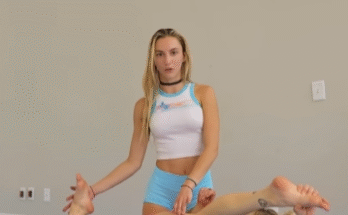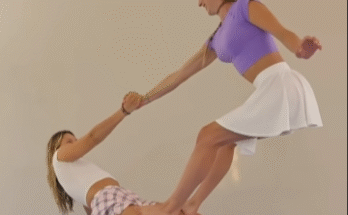Lower back pain is a common issue that affects many people due to prolonged sitting, poor posture, and lack of movement. One of the most effective ways to relieve tension and improve flexibility in the lower back is through yoga. In this session, we’ll explore the Lower Back Arch Yoga Stretch, guided by the expertise of @LilliesYoga and @allmyloveAli. This stretch is a gentle yet powerful way to alleviate discomfort, enhance spinal mobility, and promote relaxation.

Benefits of the Lower Back Arch Yoga Stretch
Practicing this stretch regularly provides numerous benefits, including:
- Relieves Lower Back Tension: Helps release tightness in the lumbar region.
- Improves Spinal Flexibility: Encourages movement and mobility in the spine.
- Enhances Posture: Supports proper alignment and reduces the risk of slouching.
- Promotes Relaxation: Activates the parasympathetic nervous system, reducing stress.
- Strengthens Core Muscles: Engages the abdomen and lower back muscles for stability.
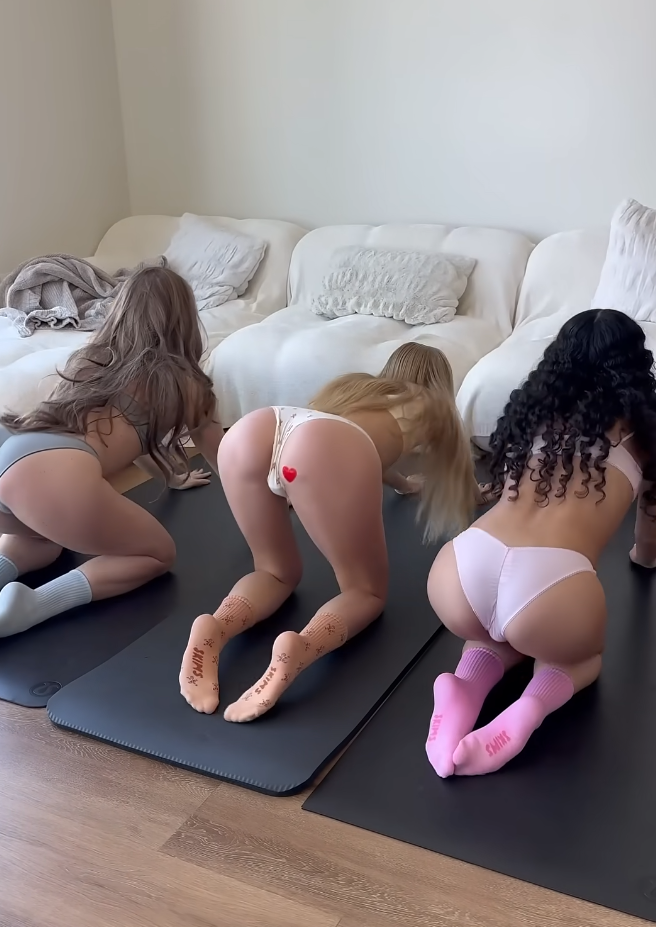
Preparation Before the Stretch
Before starting, ensure you have a comfortable space with a yoga mat. Wear flexible clothing that allows for a full range of motion. If you experience any discomfort, use props such as a bolster, yoga blocks, or a folded blanket for support. Always listen to your body and modify as needed.
Step-by-Step Guide to the Lower Back Arch Yoga Stretch
1. Cat-Cow Pose (Marjaryasana-Bitilasana) Warm-Up
Begin by warming up the spine with Cat-Cow Pose:
- Start in a tabletop position with wrists under shoulders and knees under hips.
- Inhale, arch your back, drop the belly, and lift your chest and tailbone (Cow Pose).
- Exhale, round your back, tuck the chin, and engage the core (Cat Pose).
- Repeat for 5-10 rounds to warm up the spine.
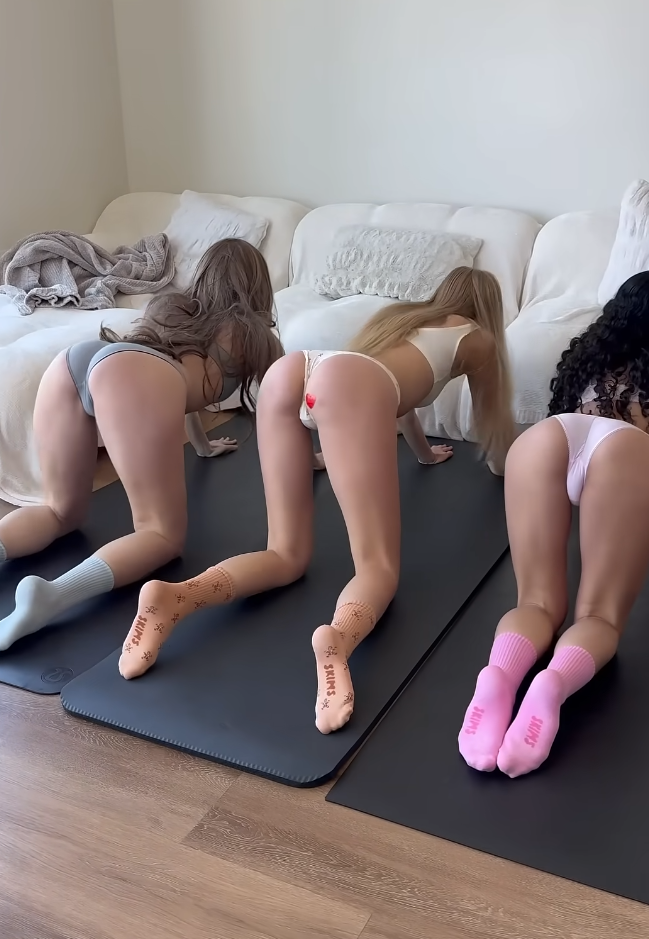
2. Sphinx Pose (Salamba Bhujangasana)
This gentle backbend prepares the lower back for a deeper arch.
- Lie on your stomach with legs extended.
- Place forearms on the mat with elbows under shoulders.
- Press into the forearms and lift the chest while keeping the lower body relaxed.
- Hold for 30 seconds to 1 minute while breathing deeply.
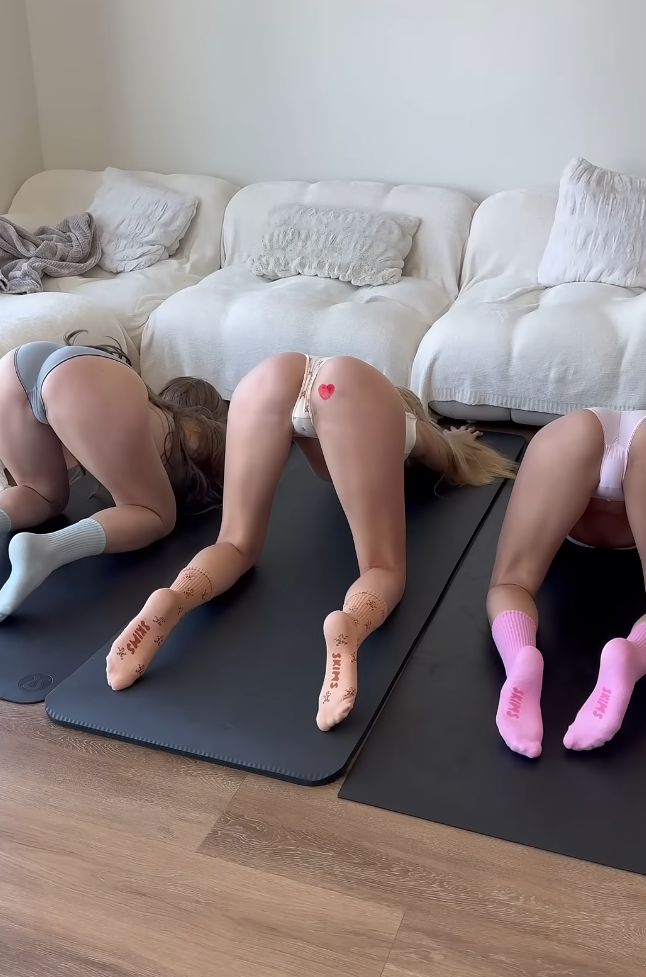
3. Cobra Pose (Bhujangasana)
A deeper extension to stretch and strengthen the lower back.
- Lie flat on your stomach with hands placed under shoulders.
- Inhale, press into your palms, and lift your chest while keeping elbows slightly bent.
- Keep the pelvis grounded and engage the back muscles.
- Hold for 15-30 seconds, then release.

4. Upward-Facing Dog (Urdhva Mukha Svanasana)
This pose intensifies the arch for greater flexibility.
- Start in a prone position with hands under shoulders.
- Press into the palms, straighten the arms, and lift the chest and thighs off the mat.
- Roll the shoulders back and engage the core.
- Hold for 15-30 seconds before gently lowering.
5. Bridge Pose (Setu Bandhasana)
This backbend strengthens the lower back while opening the hips.
- Lie on your back with knees bent and feet hip-width apart.
- Press into the feet and lift the hips towards the ceiling.
- Keep shoulders and arms relaxed on the mat.
- Hold for 30 seconds before lowering.
6. Bow Pose (Dhanurasana)
A deeper backbend to enhance lower back flexibility.
- Lie on your stomach and bend your knees, reaching for your ankles.
- Inhale, lift your chest and legs off the mat.
- Hold for 20-30 seconds, breathing deeply.
- Release slowly and rest.
Cool Down and Counter Poses
After deep backbends, it’s essential to neutralize the spine with counter stretches.
Child’s Pose (Balasana)
- Sit back on your heels with arms extended forward.
- Lower the forehead to the mat and breathe deeply.
- Hold for 1-2 minutes to release tension.
Seated Forward Fold (Paschimottanasana)
- Sit with legs extended forward and hinge at the hips.
- Reach for your feet and relax into the stretch.
- Hold for 30 seconds to 1 minute to lengthen the spine.
Supine Twist
- Lie on your back and bring knees to one side.
- Extend arms and look in the opposite direction.
- Hold for 30 seconds per side for spinal decompression.
Tips for a Safe and Effective Practice
- Move Slowly and Mindfully: Avoid jerky movements and ease into each stretch.
- Breathe Deeply: Use slow, controlled breaths to enhance flexibility and relaxation.
- Listen to Your Body: Modify poses as needed and avoid overextending.
- Practice Consistently: Incorporate these stretches into your routine for lasting benefits.
- Use Props if Necessary: Blocks, bolsters, and straps can provide additional support.
Conclusion
The Lower Back Arch Yoga Stretch, as demonstrated by @LilliesYoga and @allmyloveAli, is an effective way to enhance spinal mobility and relieve lower back tension. By practicing these stretches regularly, you can improve posture, flexibility, and overall well-being. Remember to listen to your body and modify as needed for a safe and enjoyable practice. Keep stretching, stay consistent, and enjoy the benefits of a healthy, flexible spine!

